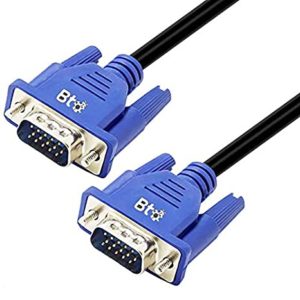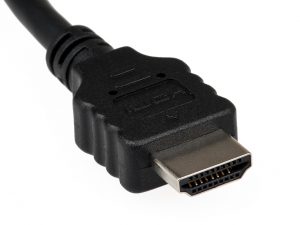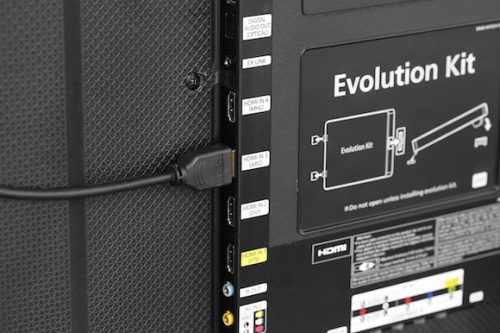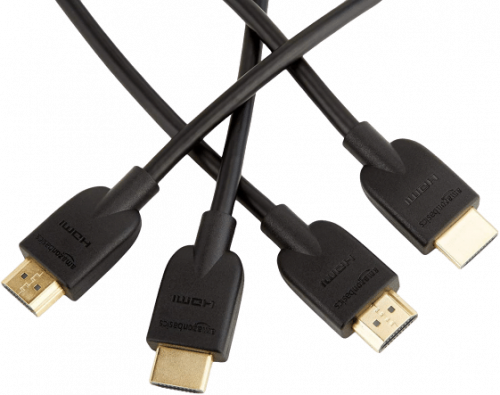
Most people will know that VGA is analog, and arguably obsolete in some circumstances, but does this mean that HDMI is always better? It really depends on what you’re using it for. To make sure you’re not using the wrong cable for your purposes, our team has created a detailed comparison between the two.
VGA or HDMI?

- Carries analog signals
- Supports VGA to DVI
- Supports VGA to HDMI
- Better for computer monitors

- Carries digital signals
- Carries video and audio signals
- Hot pluggable
- Fast transmission
Defining VGA and HDMI
VGA, or Video Graphic Array, is a type of connection that carries an analog signal. It’s a video cable most commonly used for a monitor or projector and is considered the analog video standard. However, it carries only video signals.
HDMI, or High Definition Multimedia Interface, is a much newer connection that supports a digital signal. It is often what our experts recommend as a digital standard connection. The HDMI cable is used for HDTVs everywhere.
Features of VGA and HDMI
Size and Length
The VGA and HDMI cable length round has a clear winner. Although the two cables may appear very similar, the difference in performance is vast. A VGA cable is very likely to lose picture quality due to the length as well as the actual quality of the cable. Luckily, this is something you won’t have to worry about for digital audio and visual signals from an HDMI cable.

Winner: HDMI
Signals Transmitted
As our media team briefly mentioned before, Video Graphics Array only supports RGB analog video signal and does not offer audio. Since it only transmits a single video signal, you will need a separate cable for audio. On the other hand, High Definition Multimedia Interface (HDMI), can support both video and audio signals. For this reason, HDMI ports are seen on more modern monitors and TVs.

Winner: HDMI
Transfer Speed
As for the transfer speed and input lag, HDMI stands as the winner. HDMI connections support a max refresh rate of 20Hz, only as a very slight input lag, no discernable signal interference, and are hot pluggable. This term means you can plug and unplug the cable from the system while it is on.

There are also different HDMI specifications, which can support faster speeds. An HDMI standard cable has either 19 or 29 pins and the 2.0 version can reach the max refresh rate we outlined above. As for VGA cables, there are only 15 pins and the max refresh rate it can reach is about 85Hz.
Transfer speeds for the cable in the VGA port may also be affected by external interference, but HDMI is much less susceptible to these factors thanks to the thick shielding.
Winner: HDMI
Resolution Supported
Both VGA and HDMI can support video. Initially, the VGA connection could only support 640×840 pixels, but the quality has been bumped up since the release of the UXGA (Extended Graphics Array) cable back in 2007. The max resolution VGA can support is now 1600×1200.

As for HDMI, there is a reason why it’s our team’s top recommendation every time. It supports HD video at 1920×1200 pixels max.
Winner: HDMI
Audio
The winner for the audio round in our VGA VS HDMI comparison is clear. Since VGA does not support an audio signal, it is immediately eliminated. HDMI connections can transmit audio and video. HDMI can handle Dolby Digital [1], DTS – HD master audio, Super Audio CD, DVD-Audio, Dolby TrueHD, and more.
Winner: HDMI
Compatibility with Most Devices
The compatibility is also the display device that features both HDMI VGA connections. In general, an HDMI port is seen on newer monitors and devices while VGA ports are on older versions. Older graphics cards support VGA, but it’s not completely out of date yet, because you can connect your VGA cable to the HDMI port with an HDMI adapter on modern devices

If your computer monitor is built between 2000 to 2006, then you will need a VGA to DVI converters (used for DVD players as well). Unfortunately, even with something such as HDMI converters, you still won’t get the high quality video regular HDMI cables provide.
The same logic for VGA to HDMI conversion works the other way as well, where instead of using an HDMI converter to gain compatibility to modern devices, you can get an HDMI to VGA converter for older devices.
An HDMI or VGA adapter isn’t very costly, and can be a great asset if you don’t want to transfer cables all the time.
Winner: HDMI
For Gaming and Movies
HDMI supports a high-quality video signal, which is why it’s our team’s recommendation. It’s a one-cable solution to all your media needs. The quality of your movie and gaming experience depends on the motion rate as well, which we outlined above. You will notice that HDMI has much higher figures, which is why it’s also the superior option.

As for resolution, HDMI carries video signals faster, delivers better colors, and you won’t need separate cables for audio.
Winner: HDMI
Overall Winner: HDMI

There is no question that HDMI emerges as the ultimate champion in our HDMI VS VGA comparison. It has less input lag, supports higher quality video signals for digital video content, does not require a separate audio cable, and can work with older devices with a VGA connector. Modern HD TV sets usually have HDMI, which will bring the fastest transmission to your TV screen.
The post VGA vs HDMI — Which is Better? (2021) appeared first on The Product Analyst.
from The Product Analyst https://theproductanalyst.com/vga-vs-hdmi/
No comments:
Post a Comment